

Contemplate the shared mission of Nanjing artist Liu Guofu with the American born painter, sculpture and photographer, Cy Twombly. Although born over four decades and more than 7,000 miles apart, the search for the "human longing to communicate" unites these two artists. We have chosen to focus on Liu's The Cold Mountain No.7 and Twombly's 1971 mixed media canvas, Nini's Painting.

Cy Twombly, Nini's Painting [Rome], 1971, Oil based house paint, wax crayon, and lead pencil on canvas, 261 x 301 cm, Image courtesy of The Broad.
[Twombly's] art revealed an enthralling calligraphic and diagrammatic universe teeming with meaning. His ultimate subject was nothing less than the human longing to communicate - to make meaning that others could apprehend and expand.
Roberta Smith on Cy Twombly for the New York Times
In Liu Guofu's painting of 2016, The Cold Mountain No.7, we are able to perceive the artist's fascination with the writing tradition and his exploration for pure spiritual language through the movement of brushwork. The cold blue mottled brushstrokes in this painting build in rhythmic layers resulting in a uniquely translucent beauty. The calligraphic-scale but deliberately illegible markings overlap in tens of layers to create a fragile texture, reassembling dreams and illusions, smoke and water.
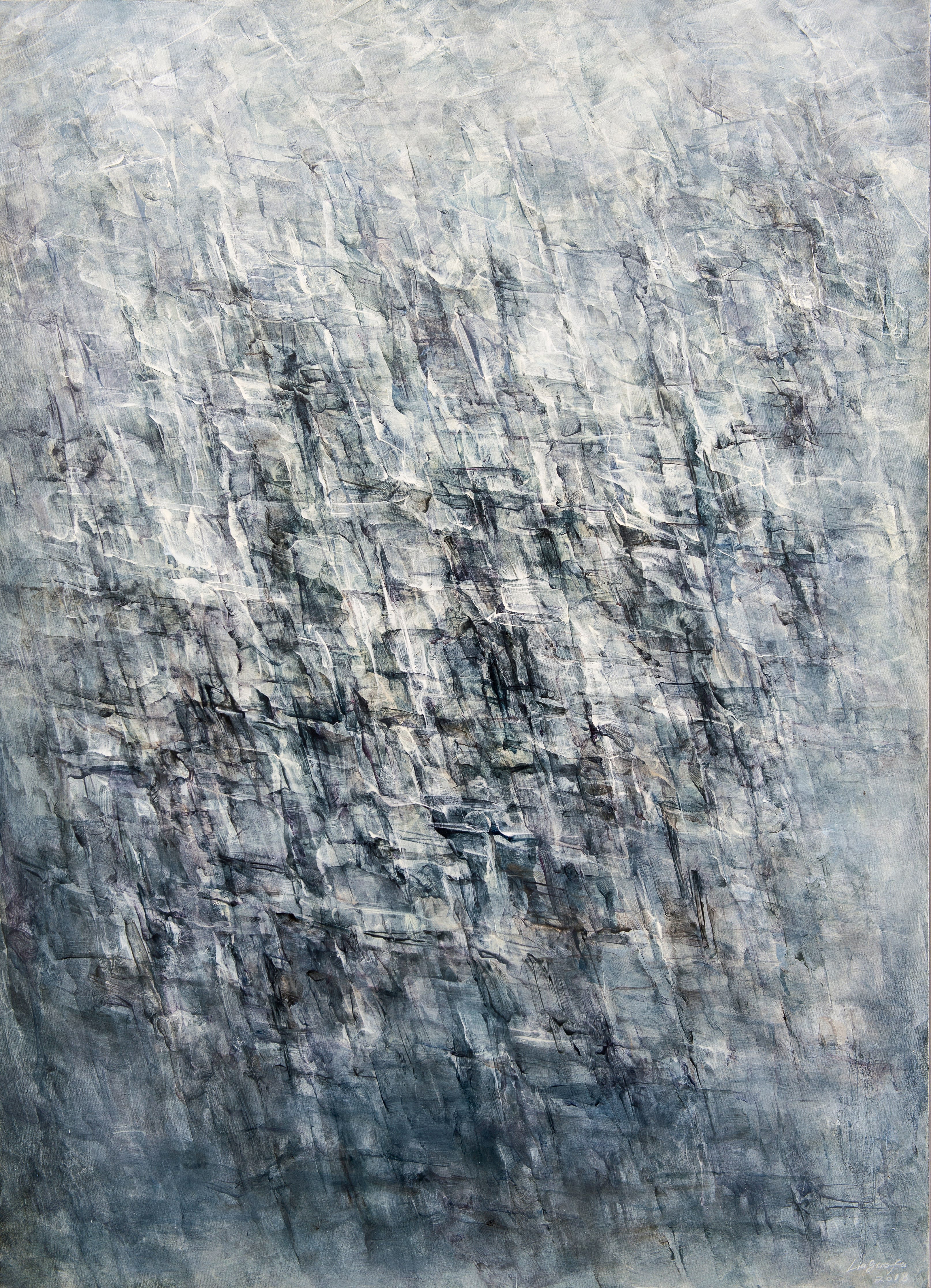 Liu Guofu, The Cold Mountain No. 7, 2018, Oil on canvas, 180 x 130 cm
Liu Guofu, The Cold Mountain No. 7, 2018, Oil on canvas, 180 x 130 cm
Liu engages with the calligraphic tradition of his Chinese heritage, while at the same time engages with the universal desire to communicate through language. Roberta Smith could indeed be referring directly to Liu Guofu in her following analysis of Twombly’s work – which she describes as “primitive, in its emphasis on direct old-fashioned mark making, except that his feverish scribbles and calligraphic scrawls made that process seem new and electric. And part of that electricity came from his ecstatic response to history, literature and other art, and the raw emotionalism that his mark making conveyed.”
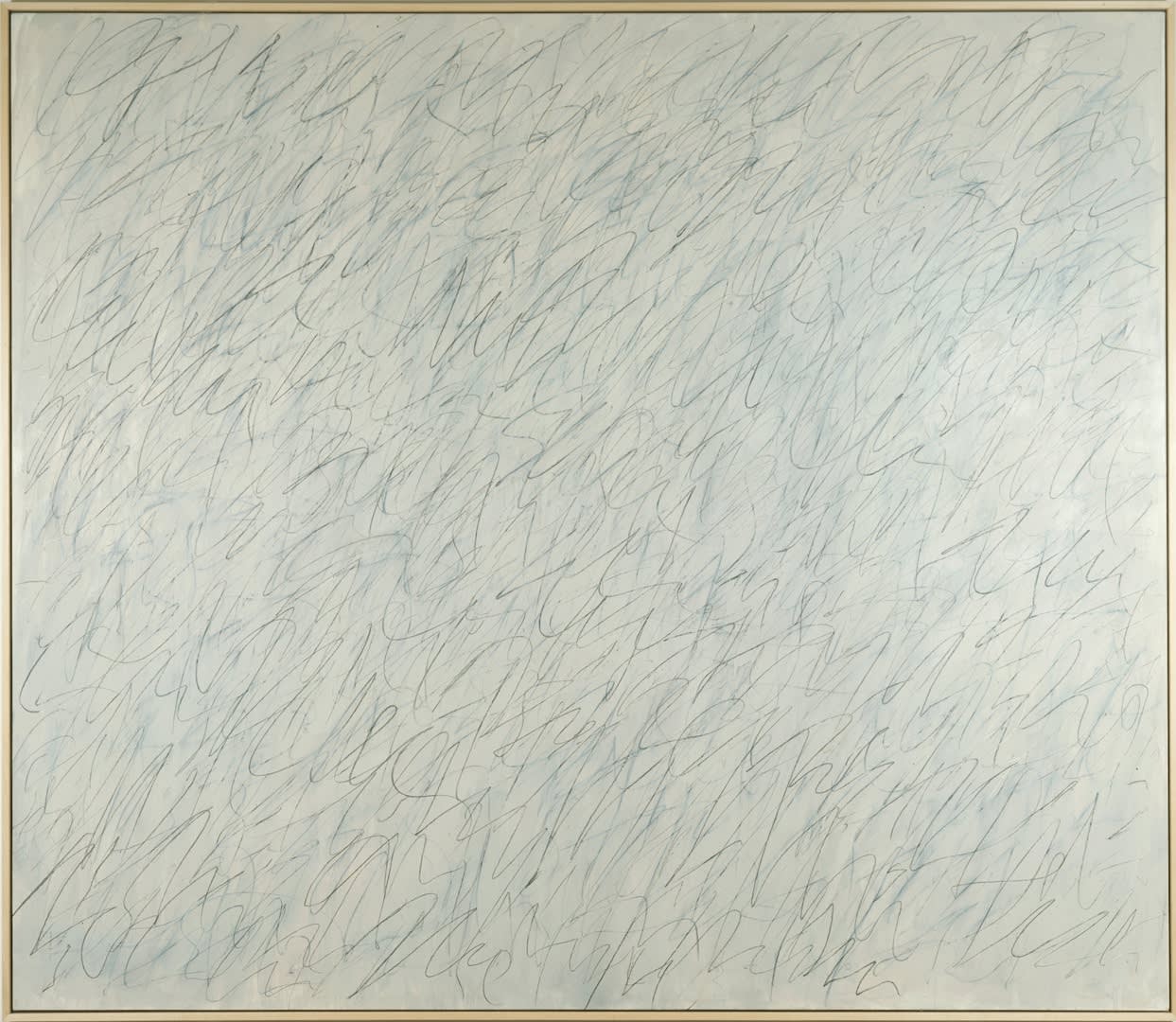
Cy Twombly, Nini's Painting [Rome], 1971, Oil based house paint, wax crayon, and lead pencil on canvas, 261 x 301 cm. Image courtesy of The Broad.
Meanwhile, in American artist Cy Twombly’s work Nini's Painting, the rhythmic dark-grey strokes penetrated with blue-grey traces construct a similarly translucent and layered composition. The line becomes a symbol that shows artist’s effort to destroy and reconstruct the meaning of paintings through graffiti-like images and signs, after absorbing the artistic language of the New York School. The seemingly random arrangement of his marks combine to create a random yet harmonised concerto. Laura Cumming discusses this musicality, “You can characterise Twombly's marks - hesitant, agile, subtle, quick-tempered, awkward - but not the way they work together to give off music or mood. In this respect, the experience of seeing them is deep but wordless."

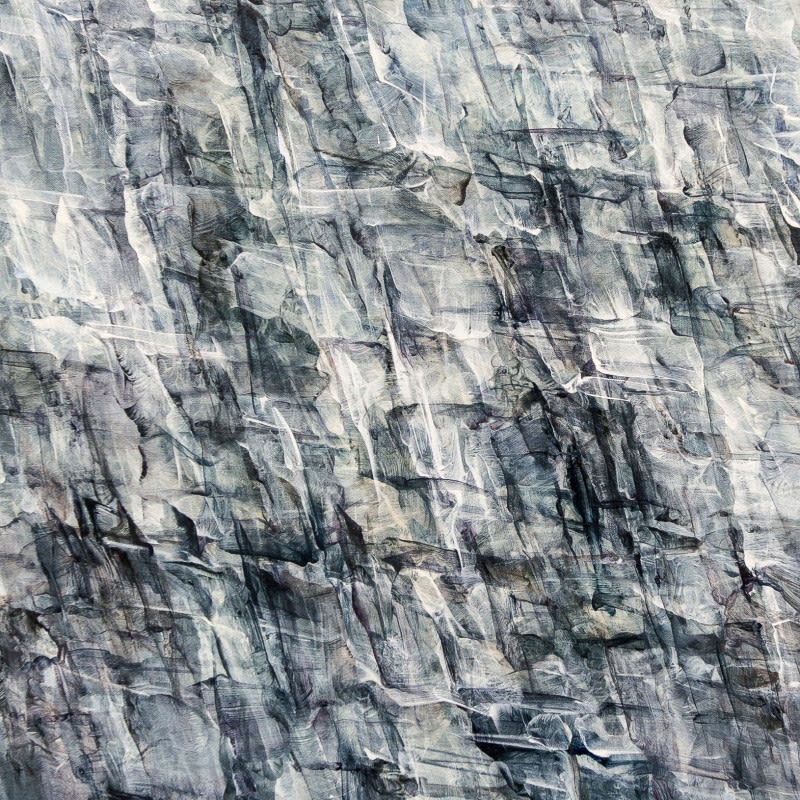
This depth is something that is apparent In Liu’s work. Liu’s brushstrokes are at once tangible in their literal physicality and permeable in their translucency. In using abstract strokes rather than identifiable Chinese characters, the resulting effect is a deliberate mystification of meaning. The choice of the colour blue is both a nod to the calming effect it is known to have on the human mind, as well as being a reference to the reverence the Chinese have to the colour and material, jade. These elements combine to create a depth not dissimilar to looking at a deep lake, with a surface of reflecting and refracting light. Twombly's painting also evokes water, as Laura Cumming writes, "numbers and letters are like pictograms; lines rippling across a page appear purely abstract, except they resemble waves, and what do waves resemble, Twombly delicately implies, but lines of writing?".
Each person’s brushstrokes are the traces they leave in the world.
— Liu Guofu
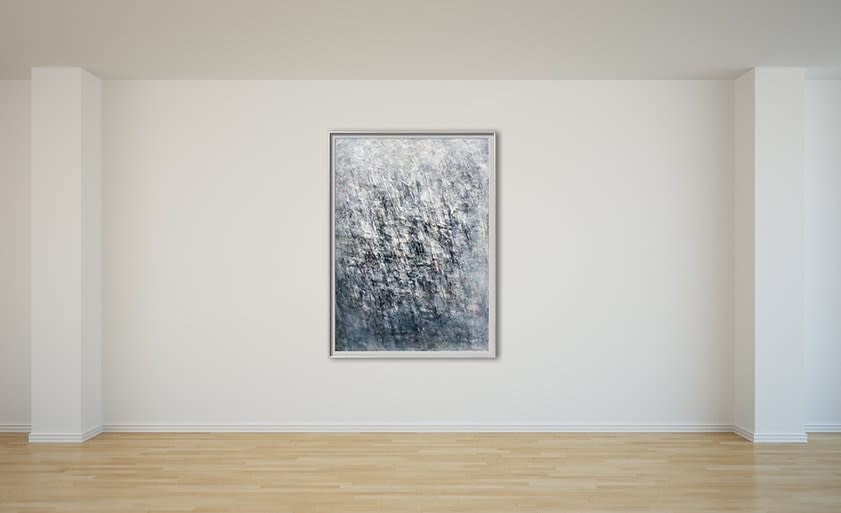
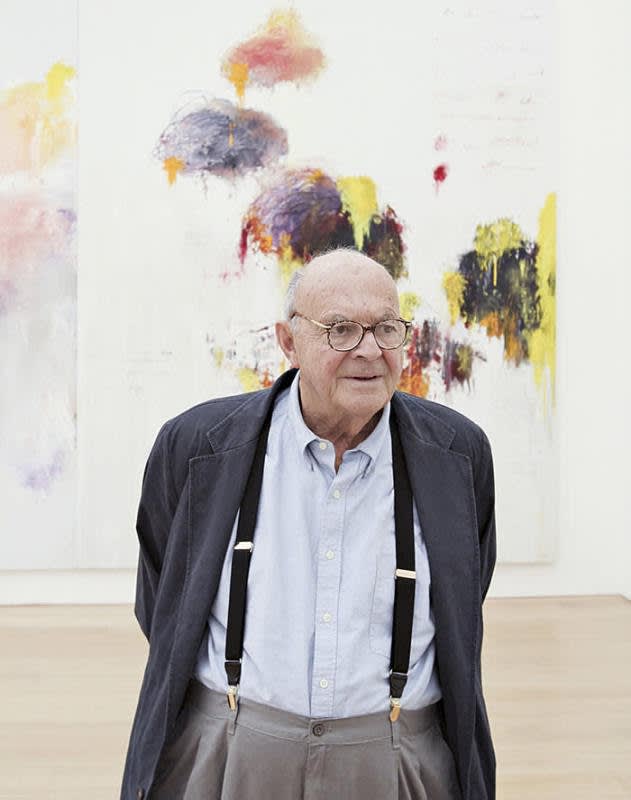
Cy Twombly
1928-2011
Edwin Parker "Cy" Twombly Jr. was an American painter, sculptor and photographer. He belonged to the generation of Robert Rauschenberg and Jasper Johns. Twombly is said to have influenced younger artists such as Anselm Kiefer, Francesco Clemente, and Julian Schnabel.

